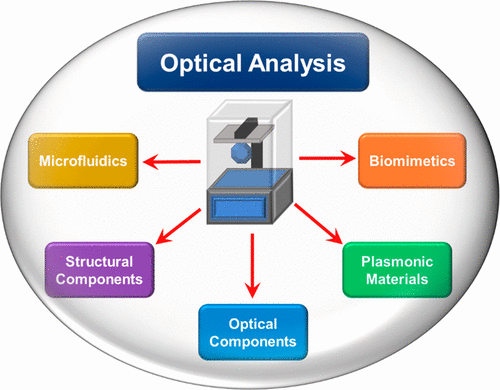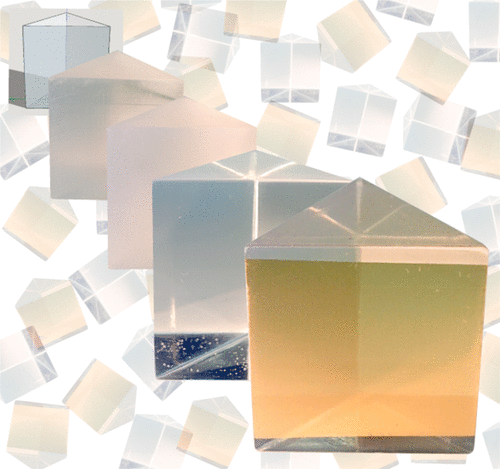Three-dimensional (3D) printing is one of the centers of new fabrication technology and has experienced a burgeoning presence in academic research. The ability to manufacture components easily and with essentially no geometric constraints has facilitated faster and more effective analytical method development, while also expanding the range of types of analysis possible via the 3D printing materials themselves. We are actively investigating the use of 3D printing as a method of manufacture of a range of components for optical analysis. We use a FormLabs Form 2 printer in lab for printing items like optical components, hybrid plasmonic materials, microfluidics, and around-the-lab parts.
Optical Component Printing
A newer line of development for 3D printing is the potential to print custom optics using transparent resins. We are actively investigating the fabrication of 3D-printed prisms via stereolithography (SLA) for plasmonic sensing of a diverse range of biotargets. The faces of the printed optics can be polished and smoothed to provide an effective surface for propagation for surface plasmon polaritons. The 3D printing polymer itself allowed gold to be layered onto the final surface in multiple ways, both via conventional deposition of gold layers for standard SPR sensing and SPR imaging and by polydopamine-assisted growth of nanoparticles for LSPR sensing. Biosensing of both bacterial and human protein targets was achieved with comparable sensitivity to conventionally-manufactured optics, and the systems were very compatible with standard AuNP-based amplification strategies. Furthermore, manipulation of the photopolymer printing materials used for SLA may allow for more complex surface and interfacial designs for easy plasmonic-based manufacturing.
Microfluidic Fabrication
A wide variety of 3D-printing applications incorporate microfluidic designs that are enabled by 3D printing's ease of use and easy-to-customize internal designs. In fact, for analytical chemistry, microfluidics is essentially the dominant current application, as many further optical or electrochemical applications frequently include microfluidic portions as well. We are investigating the use of 3D-printed microfluidics for a range of means, including sample preconcentration, complex incubation procedures, and as a way to custom modify standard commercial instruments.

